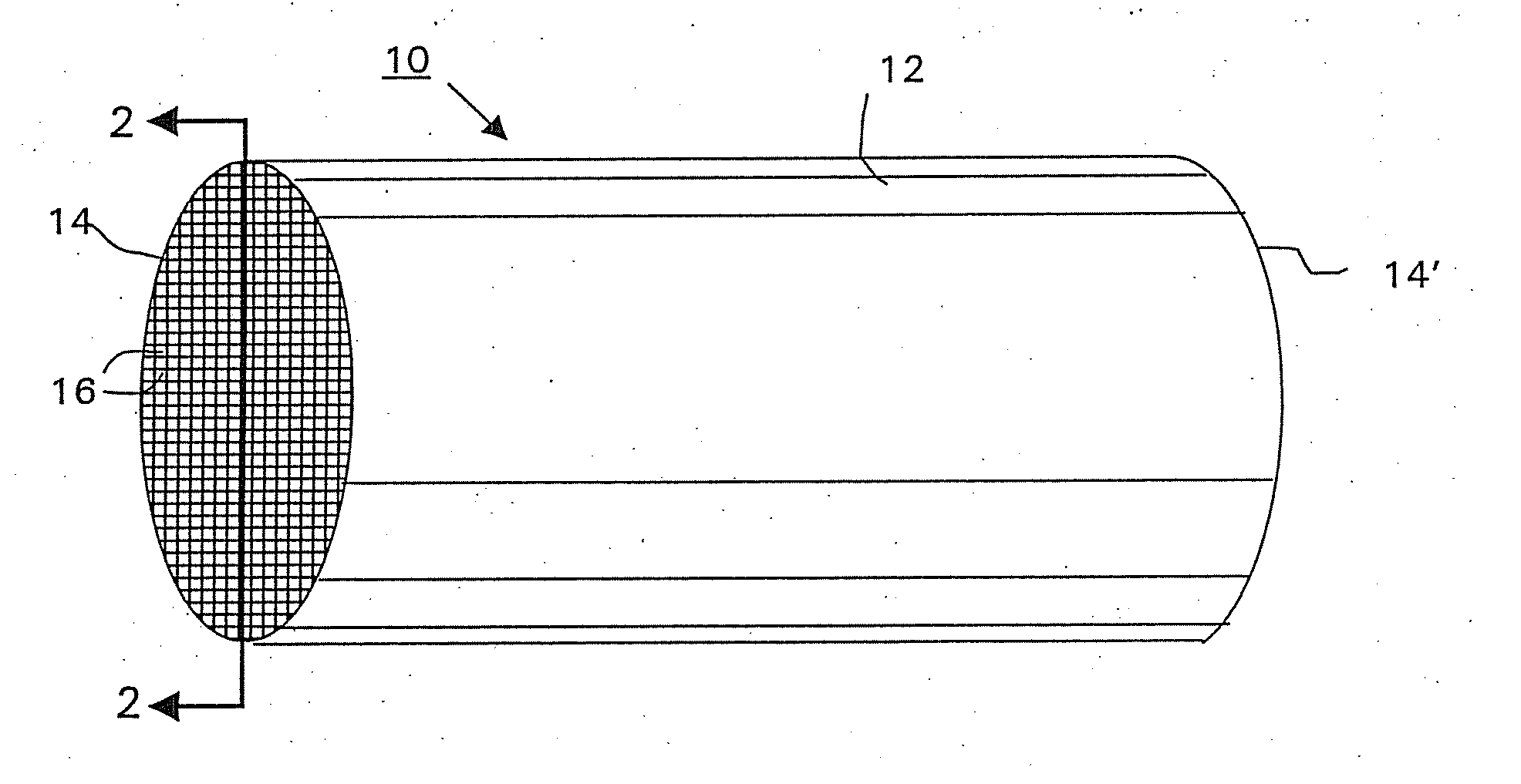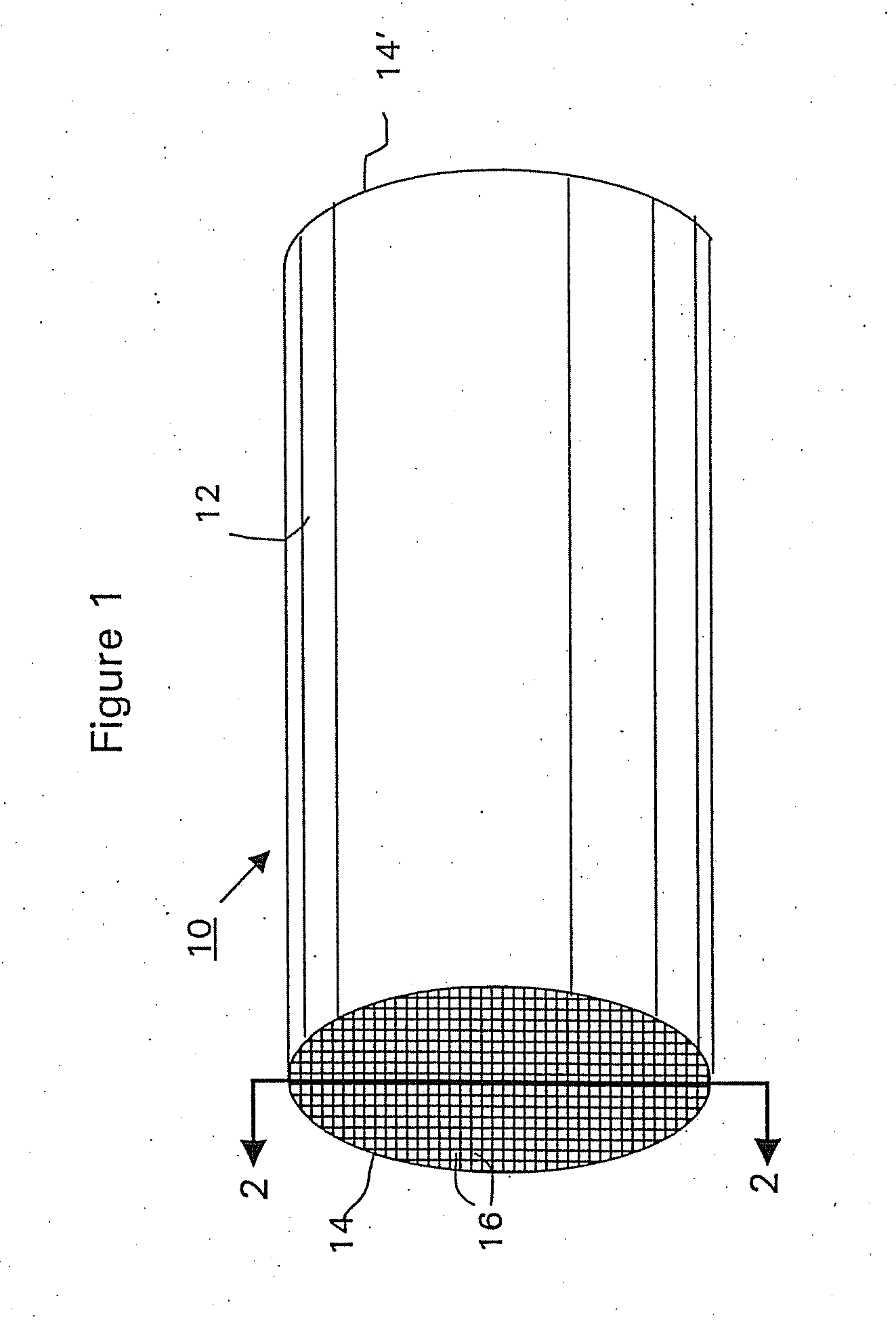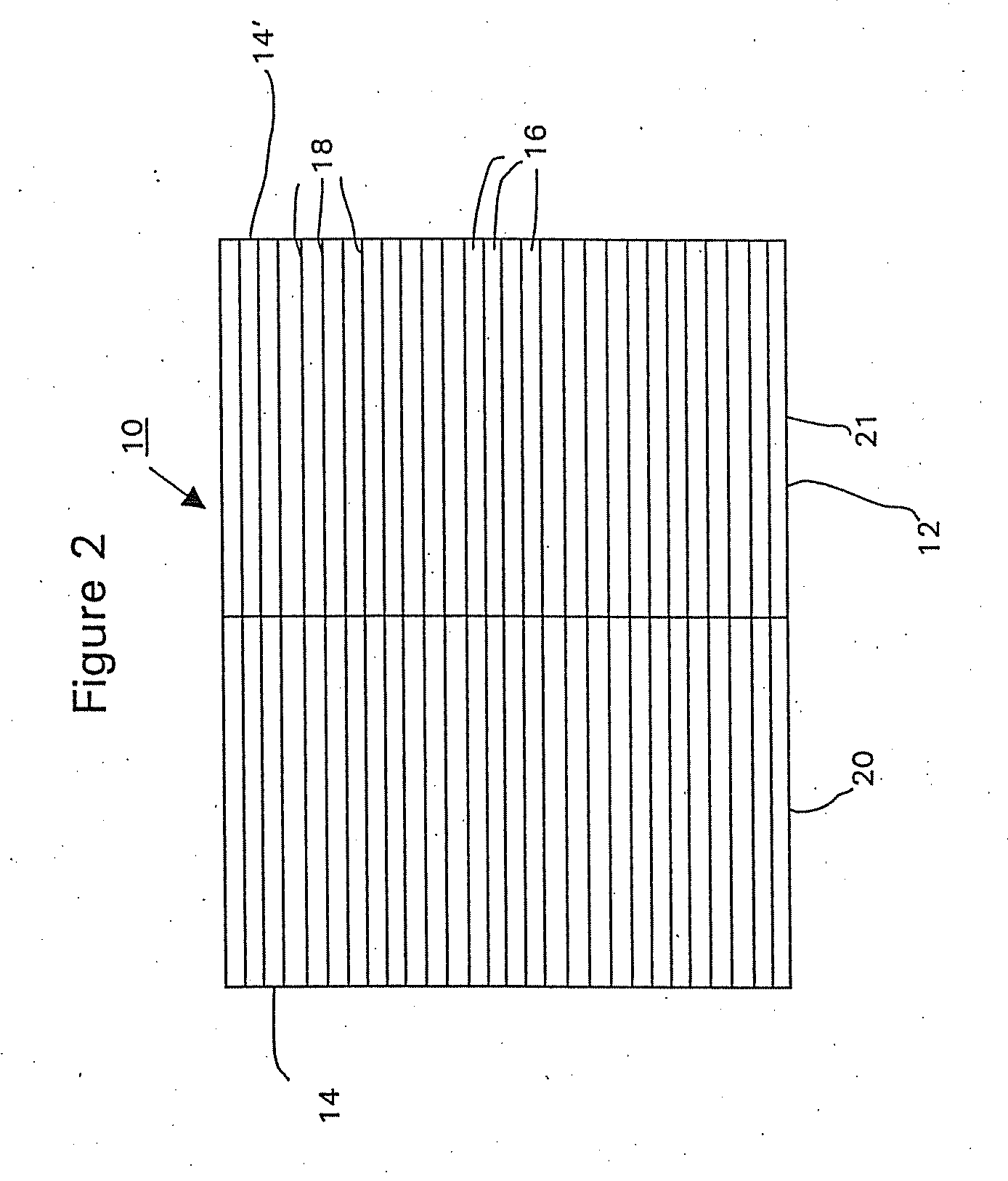Simplified article for carbon monoxide removal
a carbon monoxide and article technology, applied in the direction of physical/chemical process catalysts, combustible gas purification/modification, separation processes, etc., can solve the problem of reducing the efficiency of carbon monoxide removal
- Summary
- Abstract
- Description
- Claims
- Application Information
AI Technical Summary
Benefits of technology
Problems solved by technology
Method used
Image
Examples
example 1
Preparation of 5 wt. % Ruthenium on Alumina Washcoat
[0089] An aqueous ruthenium nitrosyl nitrate solution (52.8 g) was diluted with deionized water to provide a 73 mL volume of solution. This solution was used to impregnate 100 g of gamma alumina powder using an incipient wetness impregnation technique. After mixing well, the powder was dried at 120° C. for two hours, and then calcined at 250° C. for two hours. The powder was slurried with water to form the washcoat.
example 2
Preparation of a Zoned Catalyst Article, Article A (Prox Catalyst Zone / Dual Catalyst Zone)
[0090] A commercially available, monolithic catalyst coated along the entire axial length with a washcoat having approximately 5 wt. % platinum and about 0.3 wt. % iron on an alumina support (Selectra.™. PROX catalyst (Engelhard Corp. Iselin N.J.) was used as the starting workpiece. The ceramic monolith substrate contained 400 cells per square inch (cpsi). The monolith substrate was dipped into the 5% Ru / alumina washcoat of Example 1 to a depth of 50% of the substrate's axial length to form the second (top layer). The washcoat loading of the second layer was 2 g / in3 based on the coated volume (i.e., the axial segment of the monolith substrate that was coated with the ruthenium-containing washcoat). The excess slurry was removed by blowing air through the channels of the monolith. The catalyst was then dried at 120° C., and calcined at 250° C. in air.
[0091] The ruthenium layer in the article w...
example 3
Preparation of a Reference Bilayer Catalyst Article, Article B, Having a First Layer Containing a Prox Catalyst and Second Layer Containing a Methanation Catalyst
[0093] A monolith catalyst article was prepared identically to Article A of Example 2, except that the ruthenium-containing washcoat was coated overlaying the first layer over the entire axial length of the monolith substrate. The washcoat loading of the second layer was 1 g / in3 based on the coated volume. This catalyst article is designated as “Article B”.
[0094] It is noted that Article B and Article A of Example 2 contained the same loading of ruthenium washcoat based on the entire volume of the substrate. In addition, the total platinum group loading for both Articles A and B was the same.
PUM
| Property | Measurement | Unit |
|---|---|---|
| temperature | aaaaa | aaaaa |
| temperatures | aaaaa | aaaaa |
| particle sizes | aaaaa | aaaaa |
Abstract
Description
Claims
Application Information
 Login to View More
Login to View More - R&D
- Intellectual Property
- Life Sciences
- Materials
- Tech Scout
- Unparalleled Data Quality
- Higher Quality Content
- 60% Fewer Hallucinations
Browse by: Latest US Patents, China's latest patents, Technical Efficacy Thesaurus, Application Domain, Technology Topic, Popular Technical Reports.
© 2025 PatSnap. All rights reserved.Legal|Privacy policy|Modern Slavery Act Transparency Statement|Sitemap|About US| Contact US: help@patsnap.com



